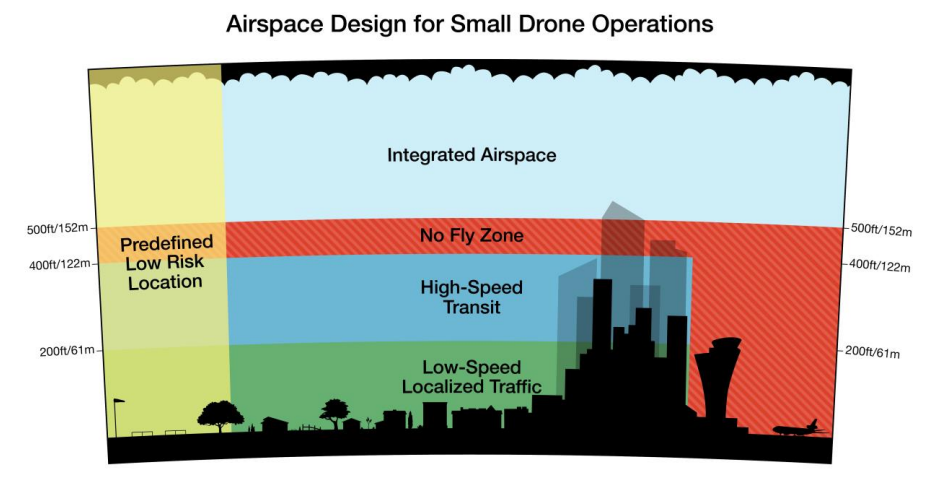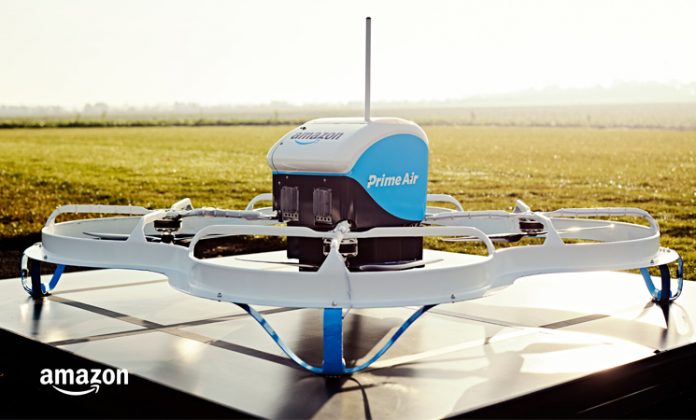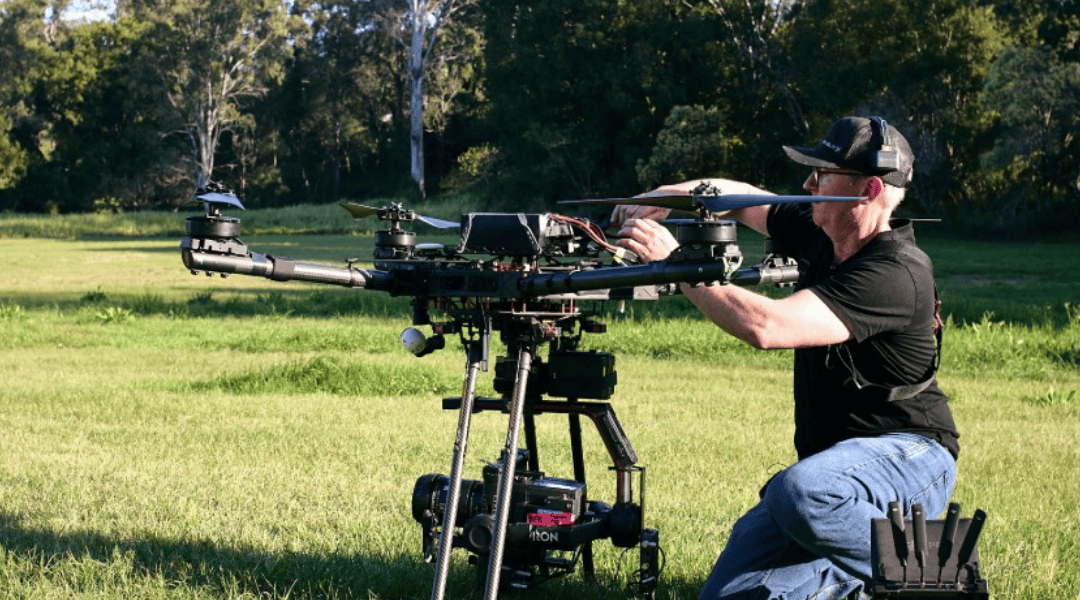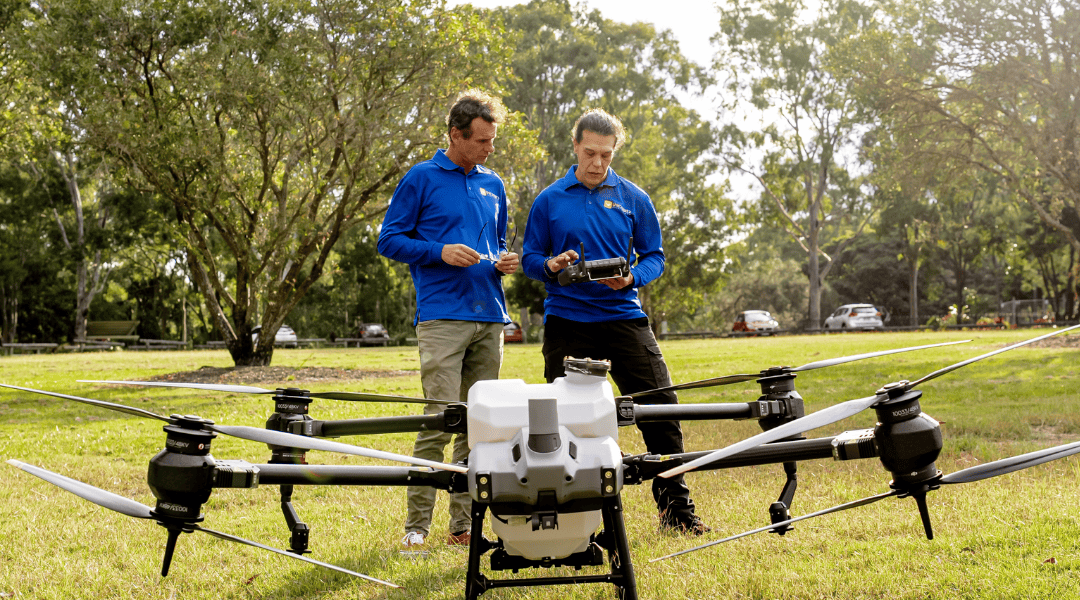You know it’s nearly Christmas when Amazon release a video about drone delivery.
One of the world’s leading online retailers has made its first commercial delivery with an autonomous drone.
Amazon last week completed a flight in rural England, delivering an electronic device and a packet of chips to a local Cambridge man within 13 minutes of the customer placing the order online.
Taking-off from a small warehouse near the customer’s residence, the drone was packed with 2.2 kg (5 lbs) of goods before being sent down a conveyer belt where the autonomous flight mode was activated.
Amazon claims its new Prime Air ‘rapid parcel delivery’ will not only greatly reduce delivery time, but will also increase ‘the overall safety and efficiency of the transportation system.’
Amazon is well known for its headline-grabbing drone delivery videos, releasing similar marketing ploys at the end of 2013 and 2015.
‘It looks like science fiction, but it’s real,’ says Amazon. ‘One day, seeing Prime Air vehicles will be as normal as seeing mail trucks on the road.’
There are safety advantages in taking fleets of vehicles off the roads but issues such as the safe integration of swarms of autonomous drones into existing airspace remain to be dealt with. Amazon is proposing a fundamental shift in airspace management to accommodate future growth of autonomous deliveries.
‘In the United States there are approximately 85,000 commercial, cargo, military and general aviation flights every day,’ says Amazon. ‘This number is likely to be dwarfed by low-altitude small unmanned aerial system (sUAS) operations in the next 10 years.
‘A paradigm shift in airspace management and operations is necessary to safely accommodate the one-operator-to-many-vehicle model required by large-scale commercial fleets,’ says Amazon.
In its proposal, Amazon argues airspace should be segregated, with airspace below 400 ft spilt into two categories, with the 200–400 ft portion designated as ‘High-Speed Transit’ lane where delivery drones can fly unimpeded. There would be a 100 ft no-fly zone between the high speed transit airspace and the lower edge of manned airspace at 500 ft.

Amazon said it would continue to work with aviation safety regulators to further develop this concept.
Amazon already has a close working relationship, of sorts, with the Civil Aviation Authority (CAA) in the UK and the Federal Aviation Administration (FAA) in the US, with both regulators taking legal action against the retailer for multiple dangerous goods safety breaches.
‘Amazon has a history of violating the Hazardous Materials Regulations,’ says the FAA, which proposed a US$350,000 penalty against the company after it illegally shipped corrosive drain cleaner. ‘From February 2013 to September 2015 alone, Amazon was found to have violated the Hazardous Materials Regulations 24 other times.’
Amazon.co.uk also faced 11 charges relating to the miscarriage of dangerous goods, with the CAA alleging the retailer sent spare batteries, flammable aerosols, and car screen wash as undeclared dangerous goods on passenger aircraft.
You can read more about Amazon Prime Air on the retailer’s website.











Apart from the pain in the posterior this wretched contraptions are becoming, what we are seeing now is only the tip of the iceberg in terms of pure nuisance value. It is becoming rapidly clear that the airspace have already lost control over these things. Any moron can buy one and launch it straight into the engine intake of a commercial airliner and the authorities can no nothing to prevent it happening. Down this path, the future looks great… The air will soon be filled with the howling of drones wizzing past your left ear or over your rooftop delivering some non-essential crap to some lazy slob who couldn’t be bothered to get off their fat backside and walk to the shop to buy something. In a nutshell, it’s a quick lesson on how to make a rapidly developing useless society become even more self-centred, lazy and useless!
[…] the world drone market estimated to reach US$127 billion by 2020 and companies such as Amazon constantly looking for ways to make low-altitude drone delivery a reality, airspace below 500 ft is going to become […]
[…] the world drone market estimated to reach US$127 billion by 2020 and companies such as Amazon constantly looking for ways to make low-altitude drone delivery a reality, airspace below 500 ft is going to become […]